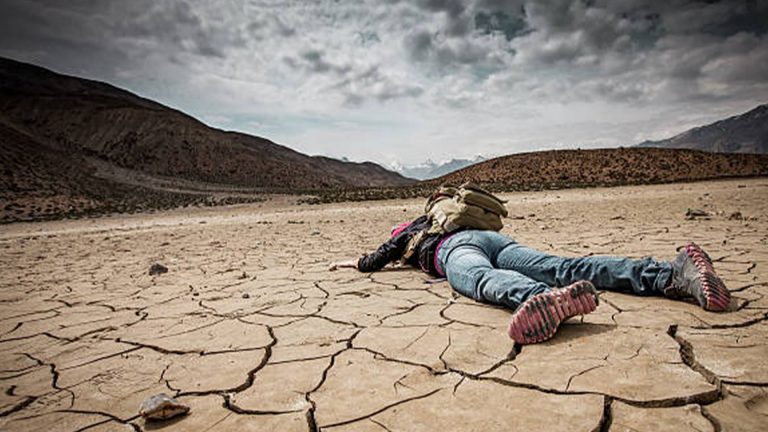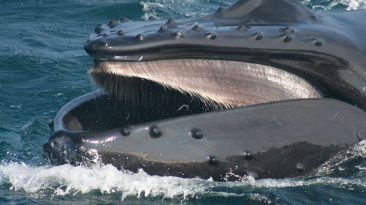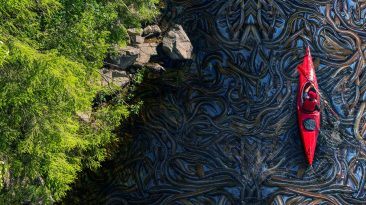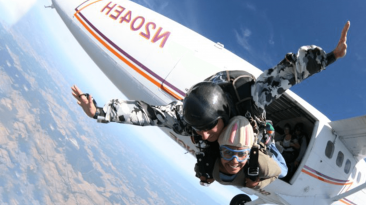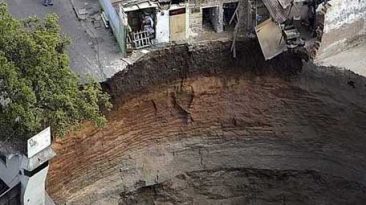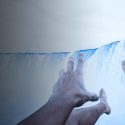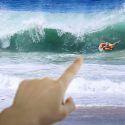Death Valley is the hottest place on Earth, with a record-setting air temperature of 57 degrees Celsius (134 degrees Fahrenheit). It’s a vast desert of oppressive heat and frequent wind.
And no one really knows how many people are lost there every year. How will you protect yourself against the deadly environment? Should you drink a lot of water? How many bars does your cell phone have?
Well, the answer’s probably zero, since the majority of Death Valley has no cell service. You’re on your own here.
The good news is, you won’t need to worry about getting wet, since Death Valley has recorded multiple years with little to no rainfall. Unfortunately, this means you are in for a full day of blistering Sun, with temperatures averaging between 43 °C to over 49 °C (110 °F to over 120 °F). And that’s just in the shade.
Now that you’re completely lost, what is the best way to survive in Death Valley?
Step 1: Don’t Rely on Your Phone
It’s time to act like you’re on another planet, since only a small part of Death Valley has cell phone reception, as survivor Donna Cooper learned the hard way. On a Thursday morning in July, Donna and her daughter picked up a friend to visit Scotty’s Castle, located in a corner of Death Valley National Park. They were smart enough to have prepared for the trip by loading their car with water. After an exhausting day, Donna used her GPS to navigate the return trip. Don’t trust technology. The GPS lead her astray and they became hopelessly lost.
They urgently tried to call 911, but there was no cell signal in the hellish wasteland. As they drove for hours without any sense of direction, they were lucky to find an abandoned campsite with trailers that provided protection from the grueling Sun, along with some leftover hose water.
After three days of struggling to survive and not knowing if anyone was even looking for them, they were located with an extensive helicopter search.
Step 2: Stay Hydrated
Drink at least four liters (one gallon) of water per day to replace the water lost from excessive sweating. The more you exert yourself, the more you need to drink. So limit your actions and conserve your water as much as possible.
Watch for symptoms of dehydration, which include fast pulse rate, headache, dizziness, muscle cramps, and a heat rash.
Step 3: Be on Alert
Be careful while seeking out essential shade. You may not need to worry about getting desperately stuck, but you do need to worry about running into any of the native species lurking around.
Death Valley is home to black widow spiders, rattlesnakes, scorpions, and coyotes, so be extra cautious where you shelter and tread. Sharing your space here could make you even more vulnerable.
Step 4: Keep Your Cool
Yes, remaining calm is always important. But in this case, you also need to keep your body cool. The best way to do this is to avoid wandering aimlessly after 10 a.m., especially in low-lying areas, which are the hottest. It might be a good idea to become nocturnal for the next 24 hours.
Step 5: Signal for Help
You need to do whatever you can to assist any potential search team. If you planned ahead and checked in at the Visitor Center, someone will follow up and know you’re missing. And if you packed properly, you may have a flare that you can set off to attract the rescue team.
If not, you will need to get creative and find a way to signal a passing helicopter. But remember, you must be continuously helping with your own rescue, so you’ll need to stay awake.
This could prove difficult as the intense heat makes you so, so drowsy. To fight the urge, check out another helpful video, How to Survive Without Sleep.
Sources
- “Death Valley”. nps.gov
- “Death Valley National Park – National Geographic”. 2015. nationalgeographic.com.
- “Woman dies in Death Valley National Park as temperatures approach 120 degrees”. 2019. Los Angeles Times.
- “Warning Signs And Symptoms Of Heat-Related Illness | Natural Disasters And Severe Weather | CDC”. 2020. cdc.gov.
- “Heat kills boy, 11, lost with his mother in Death Valley”. latimes.com
- “11-Year-Old Boy Dies After Mom Says GPS Left Them Stranded In Death Valley”. 2009. Fox News.
- “Death by GPS”. sacbee.com


